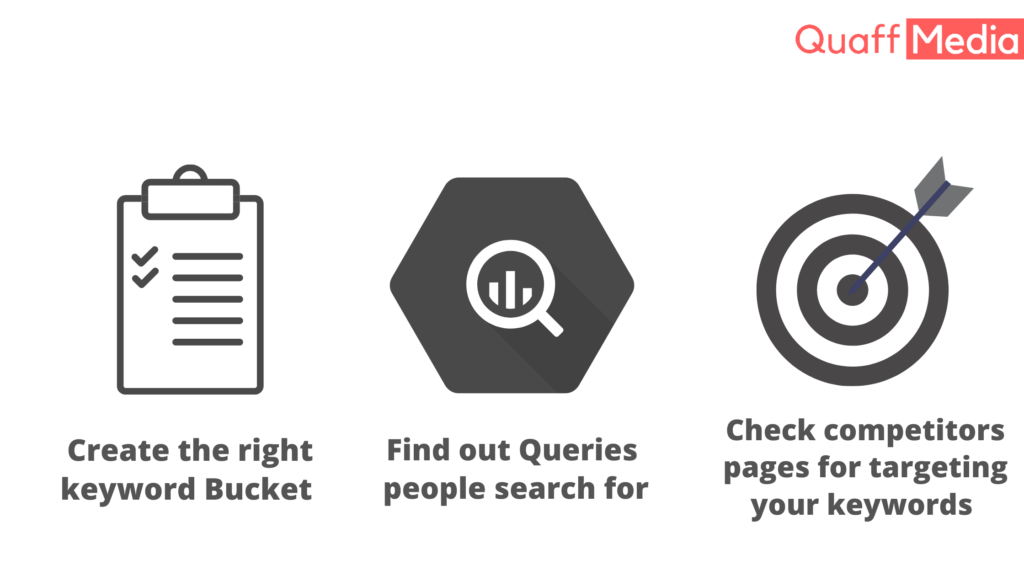Best 5 Practices of SEO Copywriting
SEO copywriting is the practice of creating content that is optimized with SEO practices. SEO-optimized content ranks well on SERPs and is considered as the quality content that solves searchers’ queries. In this blog, we’ll discuss the best SEO practices for Copywriting.
Best 5 Practices of SEO Copywriting
Let’s discover the techniques that would put your content to work and take your website up on the SERPs.

1. Create the right keyword Bucket
Your initial step for writing SEO-optimized content is searching for the right set of keywords.
Creating the right set of keywords while keeping search intent in mind is the accurate way of writing the content.
There are many tools that can help you find a list of keywords and related keywords. Search for keywords that match your user intent.
2. Find out Queries people search for
The whole concept of Search Engines is to make search easy. Thus, Search engines keep improving their features; even snippets have been introduced so that the searchers don’t even have to click on the pages to look for the apt information.
Searching for the questions that people usually ask can be a great start for effective content.
One of the best ways of getting a list of keyword-based questionnaires is to look for ways to target SERP features like a PAA (People Also Ask)
Many SEO tools help you find questions related to your topic and keywords. They’ll provide you find headlines, related questions, and more content revolving around the content.
Once you identify the most popular topics, develop content that provides even more value than your competitors’ pages.
When you find out the trending topics, create content on these topics, and provide better and more valuable content than your competitor’s page
Just add the questions that are relevant to your business and niche and you’re good to go.
3. Check competitors pages for targeting your keywords
To check how your competitors are doing on SERP, use the incognito mode or I SEarch Form.
Keyword overview tools can help you get a detailed analysis of your competitor’s performance on SERPS.
Remember, though, that it’s important to audit the top pages in the SERP manually. This will help you create an even more useful page than your competitors’ pages.
For making an informed decision on your content strategy, audit the top pages of SERPs and analyze them manually. This will give you a competitive advantage over your competitors.
Perform the following activities for making an informed content strategy
Analyze how your competitors are using your target keywords
Search for the related keywords in their content that is relevant to your niche
Find out the reading score of your competitor’s page
Determine the length of the competitor’s page

4. Use header stags wisely
In SEO Practices, using relevant heading tags and optimizing header, meta title, and meta-description is extremely crucial.
At first, searchers can only see the page’s meta title and meta description on the SERPs
To raise your organic click-through rate you must keep meta title and headlines clear and concise. Since the header is the first thing your readers see on the page, make sure it is catchy and relevant.
Often, Google changes your meta description on the SERPs based on the query of the user. However, providing an optimized title and description is important and boosts your ranking.
Make sure your tag and meta description gives the essence of your whole article and shows what your content is all about. But the most crucial; aspect of ranking your page on top is to provide quality content as a top priority.
5. Create Easy-to-Read Content
Make sure that your content is readable by a majority. And when it comes to the majority, writing clear and crisp content always goes a long way.
People on the internet are not there to get awed by you. They look for concise and accurate answers to their queries. So, make sure that you get to the point asap.
Make your content user-friendly, to get more engagement and gain more likes, shares, or conversions.
Analyze your target audience first. Try keeping your content simple and readable. Writing up to a 12th-grade reading level will do the job.

